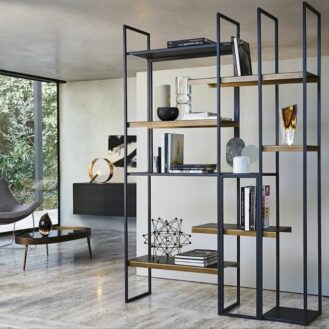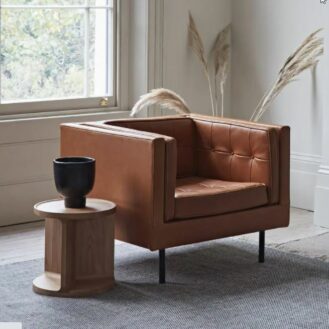When you choose a dining table, finding one that fits your space, budget and style can be tricky. This guide will look at the most important things to consider when selecting one for your home or a commercial project.

When you choose a dining table, finding one that fits your space, budget and style can be tricky. This guide will look at the most important things to consider when selecting one for your home or a commercial project.
In order to choose the best table for your room, there are a number of key criteria to consider. For instance, the table must be of a shape and size that fits comfortably within the space, leaving room to move around it. Selecting the right material and construction can also have a big impact on the longevity and cost of the table.
Key criteria for choosing a table:
The most common dining table shapes are rectangular, round, oval and square.
Visually, co-ordinating the shape of the room with the table can prevent making the space look cluttered. If space is limited, oval and rectangular tables are generally suited to central placement in longer rooms, while square and round tables are better in wider rooms. Tables with a straight edge (folding, square or rectangular) can be positioned against a wall. For restaurants or cafés with a high turnover, small tables are a popular choice. While round tables are easier to move around, square or rectangular tables can be joined together, which is great for adapting to groups of different sizes.
In order to choose the right size, there are a few steps that will simplify the task.
Measure the dimensions of your space to work out how much space you have available. Leave a border of 36-48” (90-120cm) from other furniture or the wall to leave enough room for the chairs and to move around.
Consider how many diners you expect to seat at the table. Allow 24” or 60cm between seats for a spacious dining experience and be sure to take into account the positioning of the table legs or base. Check the product description or ask the manufacturer for the recommended number of places. For professional projects, be sure to check local regulations for any spacing guidelines or requirements.
Consider whether a fixed or flexible solution is best. If your table will be used occasionally for large dinners, extending tables or folding tables can provide a practical solution. Just be sure that the table still fits the space when extended.
Choose your chairs wisely, as the design of the chairs will impact how many people can be seated comfortably. Using benches or stools instead of chairs can maximize the number of people who can be seated, but could compromise the comfort of guests.
Many modern table designs use a different material for the structure (base or legs) and the table top. The most common table top materials are solid wood, laminate, metal and glass. Make sure that you consider the quality of the finishing and the joints of the table so that they can withstand regular usage, especially if they will be moved or folded regularly. Outdoor dining tables are often made of weather resistant or treated materials such as powder coated metal.
Consider how the table design and materials can have an impact on the visual weight of a space. While glass tabletops supported by thin metal legs can keep a room looking open and more spacious, a wooden table with wide legs can look voluminous and heavy.
The style of table you prefer will depend on your project decor, and whether you want the table to stand out or blend in.
The majority of classic or traditional dining tables are made of noble materials such as wood, veneer, stone or metal using more traditional woodworking or production methods. Details can go from simple to very ornate, depending on the period style and techniques used.
Contemporary dining tables are available in a much wider range of materials, colors and designs than traditional tables. If you are looking for a centrepiece that stands out, a table with an original design could be a good conversation starter.
Options include type of base, modularity and environmental certifications. For restaurants or compact dining spaces, tables that can easily be moved and stored may be important. Options include tables with casters or folding and stackable tables. For those looking for more environmentally friendly material options, there are a number of labels to look out for such as VOC-Free, PEFC or FSC-certified wood.


